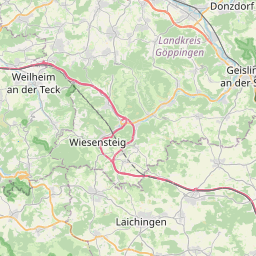






Description: Objective/Problems to be solved: This project focuses on the transformation of atmospheric pollutants from Europe in the presence of mineral dust over S. Europe and Africa. Mineral dust is the single most abundant aerosol. It is injected into the atmosphere by the action of surface winds on dry soils from cultivated regions as well as arid regions, especially over Southern Europe, North Africa and in Asia. Estimations of the global source strength vary from ' 200 to 5000 Mt/yr, representing about 50 per cent of the total production of tropospheric aerosols by natural and anthropogenic sources together. At the global scale, the most important regions of dust emission are located near industrial regions with fast growing anthropogenic emissions of precursors of ozone and aerosols. Examples are the Sahel/Sahara (close to the Mediterranean Area) and the S. E. Asia deserts (close to Japan and to Eastern China). Reactions on the surface of aerosol particles (i.e. heterogeneous reactions) taking place in the troposphere can affect the radiative budget and alter the atmospheric content of key atmospheric species. Predicting the impact of changing anthropogenic emissions on atmospheric composition and climate, in Southern Europe and the Mediterranean Basin, requires an understanding of dust/pollution interactions. A few model studies have investigated atmospheric chemistry when dust and anthropogenic emissions interact showing a substantial effect on nitrate, sulfate and ozone. There is however a chronical shortage of laboratory data to back-up the (heterogeneous) reaction schemes used in present modeling studies. Furthermore, there is a lack of specific field data to show unambiguously the effect of dust/gas interactions: We propose a multi-disciplinary approach that involves a high degree of synergy between laboratory studies, two field experiments and a modeling strategy. This project will eventually perform a study of how the gas/dust interactions studied affect the IPCC (2000) estimates of radiative forcing by ozone and anthropogenic aerosols. Scientific objectives and approach: The project main objectives are: first, to quantify the impact of mineral dust on tropospheric photochemical cycles leading to ozone production and destruction, second to quantify the specific direct radiative effect of secondary aerosol (e.g. sulfate and organics) in the present of mineral dust. This results in an enhancement in our understanding and predictive capabilities regarding atmospheric composition change and climate. The multi-disciplinary approach of the project enables us to determine the efficiency and mechanism of the interaction of mineral dust with a number of important trace gases using laboratory experiments... Prime Contractor: Centre National de la Recherche Scientifique, Laboratoire des Sciences du Climat et de Environnement, Unite Mixte CEA-CNRS; Gif-sur-Yvette/France.
SupportProgram
Origins: /Bund/UBA/UFORDAT
Tags: Ozon ? Sulfat ? Nitrat ? Meteorologie ? Mineralstoff ? Photochemie ? Staubemission ? Staub ? Wind ? China ? Vorläufersubstanz ? Aerosol ? Industriegebiet ? Staubbelastung ? Luftverschmutzung ? Daten ? Studie ? Troposphäre ? Wüste ? Trockengebiet ? Luftschadstoff ? Modellierung ? Ozonbildung ? Afrika ? Europa ? Umweltschutz ? Globale Aspekte ? Atmosphärenchemie ? Chemische Reaktion ? Anthropogener Einfluss ? Fischerei ? Ozonabbau ? Freilandversuch ? Strahlungsantrieb ? resources of the sea ? forecasting ?
Region: Baden-Württemberg
Bounding boxes: 9° .. 9° x 48.5° .. 48.5°
License: cc-by-nc-nd/4.0
Language: Englisch/English
Time ranges: 2000-02-26 - 2003-02-25
Accessed 1 times.